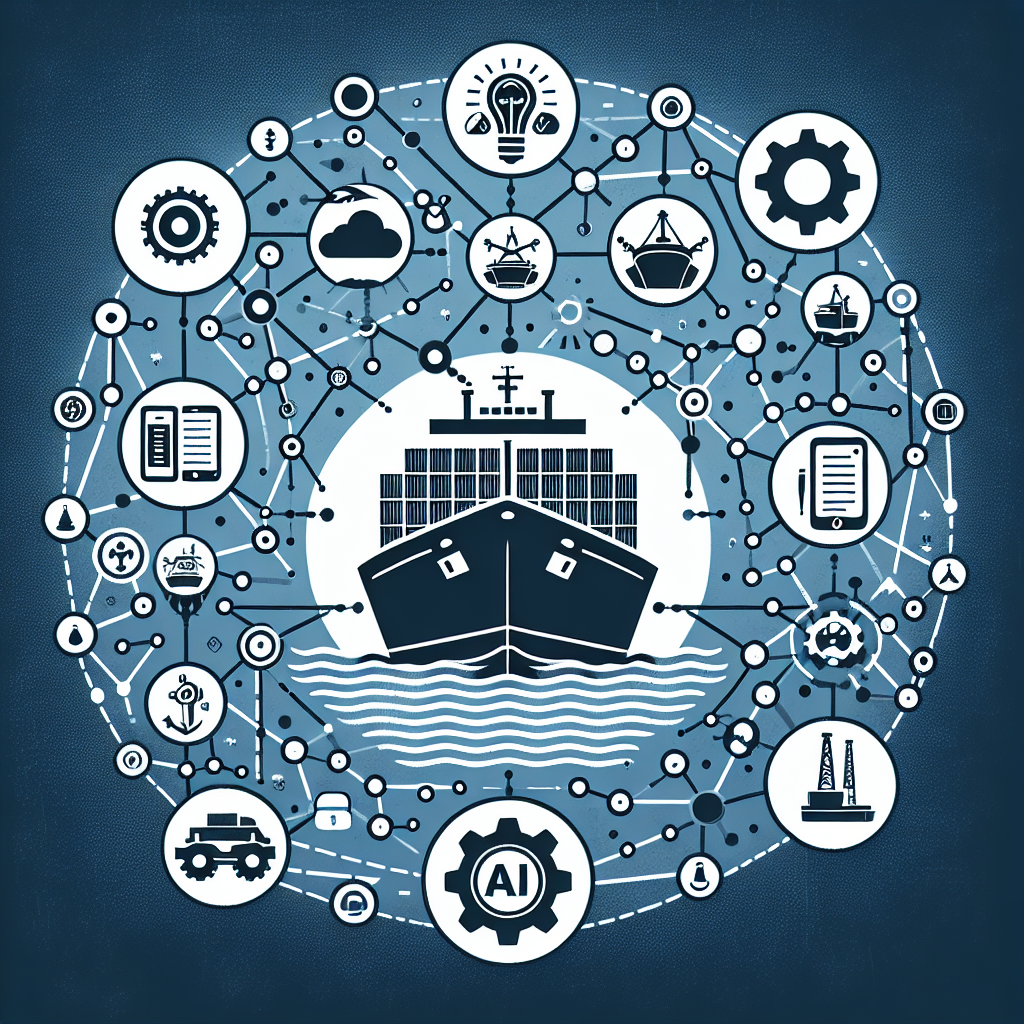AI-Powered Predictive Maintenance for Maritime Vessels in Logistics
Introduction
The maritime industry plays a crucial role in global trade and logistics, with millions of tons of goods being transported by sea every year. To ensure the safe and efficient operation of maritime vessels, maintenance and repair are essential. Traditional maintenance practices often rely on scheduled inspections and routine checks, which can be costly and time-consuming. However, with the advancement of artificial intelligence (AI) technology, predictive maintenance has become a game-changer for the maritime industry.
AI-powered predictive maintenance uses machine learning algorithms to analyze data collected from sensors and monitoring systems installed on vessels. By predicting when a component is likely to fail, maintenance can be planned in advance, reducing downtime, optimizing maintenance schedules, and ultimately saving costs. In this article, we will explore the benefits of AI-powered predictive maintenance for maritime vessels in logistics and how it is transforming the industry.
Benefits of AI-Powered Predictive Maintenance for Maritime Vessels
1. Cost Savings: One of the biggest advantages of AI-powered predictive maintenance is cost savings. By predicting when maintenance is needed, unnecessary repairs and downtime can be avoided, reducing overall maintenance costs. Additionally, with optimized maintenance schedules, spare parts inventory can be managed more efficiently, saving costs on unnecessary stockpiling.
2. Increased Safety: Predictive maintenance helps prevent unexpected breakdowns and equipment failures, which can pose safety risks to crew members and the environment. By proactively addressing maintenance issues, the risk of accidents and incidents can be significantly reduced, ensuring the safety of maritime operations.
3. Improved Efficiency: AI-powered predictive maintenance allows for the optimization of maintenance schedules based on actual equipment conditions, rather than fixed time intervals. By only performing maintenance when necessary, vessels can operate more efficiently, maximizing uptime and reducing operational costs.
4. Enhanced Reliability: With predictive maintenance, potential issues can be identified and addressed before they escalate into major problems. This leads to increased reliability of vessels, allowing for smoother operations and improved customer satisfaction.
5. Data-Driven Decision Making: AI algorithms analyze vast amounts of data collected from sensors and monitoring systems to predict equipment failures. This data-driven approach enables more informed decision-making, helping maritime companies prioritize maintenance tasks and allocate resources effectively.
6. Environmental Sustainability: Predictive maintenance contributes to environmental sustainability by reducing the likelihood of equipment failures that can lead to spills and emissions. By maintaining vessels in optimal condition, the environmental impact of maritime operations can be minimized.
Implementation of AI-Powered Predictive Maintenance
To implement AI-powered predictive maintenance for maritime vessels in logistics, several steps need to be taken:
1. Data Collection: Sensors and monitoring systems need to be installed on vessels to collect data on equipment performance and conditions. This data is crucial for training AI algorithms to predict maintenance needs accurately.
2. Data Analysis: Machine learning algorithms analyze the collected data to identify patterns and anomalies that indicate potential equipment failures. By continuously learning from new data, the algorithms improve their predictive capabilities over time.
3. Predictive Modeling: Based on the analyzed data, predictive models are developed to forecast when maintenance is likely to be required. These models can predict equipment failures with a high degree of accuracy, enabling proactive maintenance planning.
4. Maintenance Planning: The predicted maintenance needs are integrated into maintenance schedules, allowing for timely repairs and replacements to be carried out. By aligning maintenance activities with vessel operations, downtime can be minimized, and efficiency maximized.
5. Continuous Monitoring: AI-powered predictive maintenance is an ongoing process that requires continuous monitoring of equipment performance. By regularly updating predictive models with new data, maintenance predictions remain accurate and reliable.
FAQs
Q: How does AI-powered predictive maintenance differ from traditional maintenance practices?
A: Traditional maintenance practices rely on scheduled inspections and routine checks, whereas AI-powered predictive maintenance uses machine learning algorithms to analyze data and predict maintenance needs. By proactively addressing potential failures, predictive maintenance can reduce downtime and costs compared to reactive maintenance approaches.
Q: What types of equipment can benefit from AI-powered predictive maintenance on maritime vessels?
A: AI-powered predictive maintenance can be applied to a wide range of equipment on maritime vessels, including engines, propulsion systems, navigation systems, and auxiliary machinery. By analyzing data from sensors and monitoring systems, potential failures in these components can be predicted and addressed before they impact vessel operations.
Q: How can maritime companies integrate AI-powered predictive maintenance into their operations?
A: To integrate AI-powered predictive maintenance into their operations, maritime companies need to invest in sensors and monitoring systems for data collection, develop machine learning algorithms for data analysis, and implement predictive models for maintenance planning. Collaboration with AI technology providers and data scientists can also help facilitate the adoption of predictive maintenance solutions.
Q: What are the key challenges of implementing AI-powered predictive maintenance for maritime vessels?
A: Some of the key challenges of implementing AI-powered predictive maintenance for maritime vessels include data quality and availability, integration with existing systems, and organizational readiness. Overcoming these challenges requires a strategic approach to data management, technology adoption, and change management within maritime companies.
Conclusion
AI-powered predictive maintenance is revolutionizing the way maintenance is conducted on maritime vessels in logistics. By leveraging machine learning algorithms to predict equipment failures, maritime companies can optimize maintenance schedules, reduce downtime, and save costs. The benefits of predictive maintenance extend beyond cost savings to include increased safety, improved efficiency, enhanced reliability, data-driven decision-making, and environmental sustainability. With the right implementation strategy and continuous monitoring, AI-powered predictive maintenance has the potential to transform the maritime industry and drive operational excellence.

